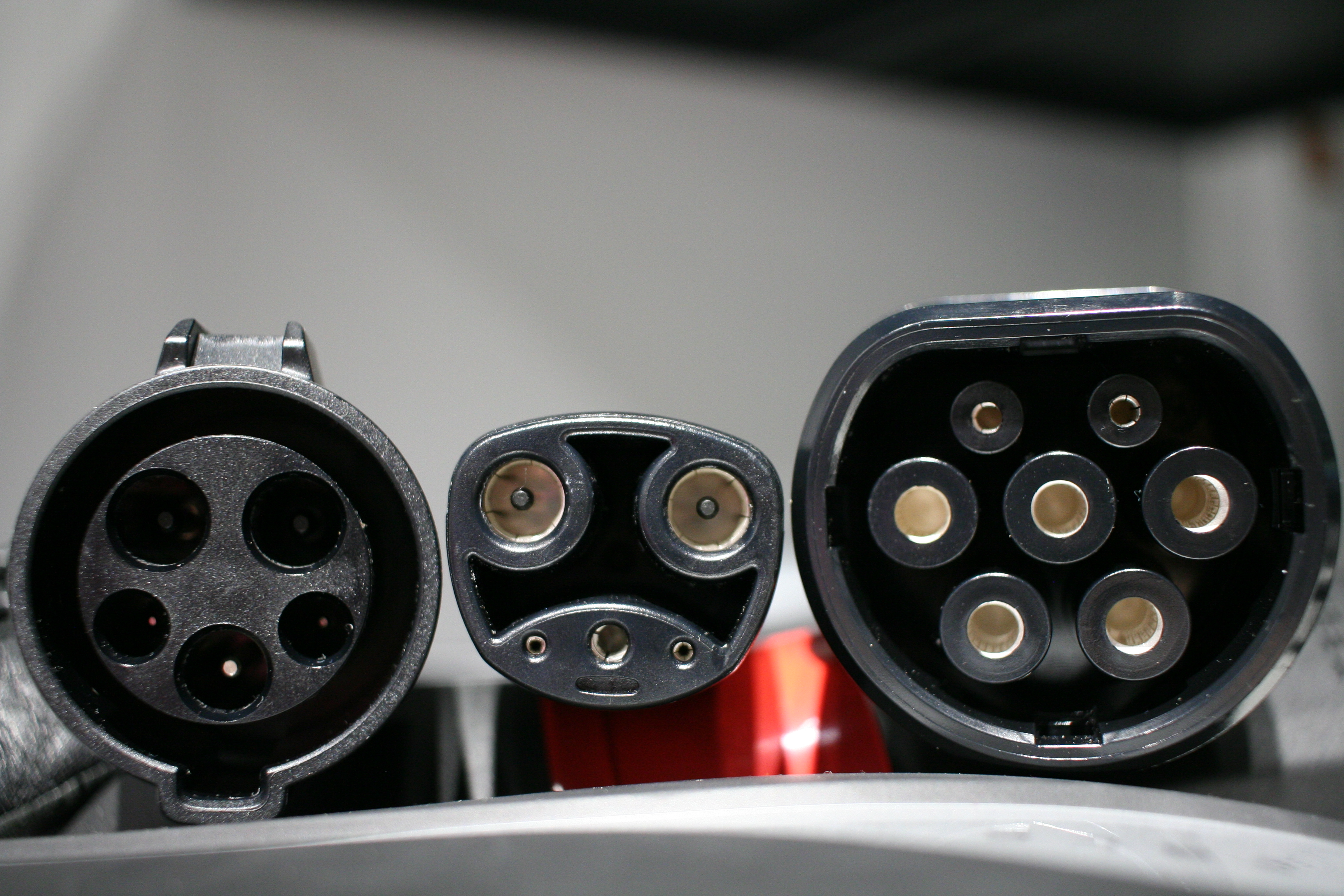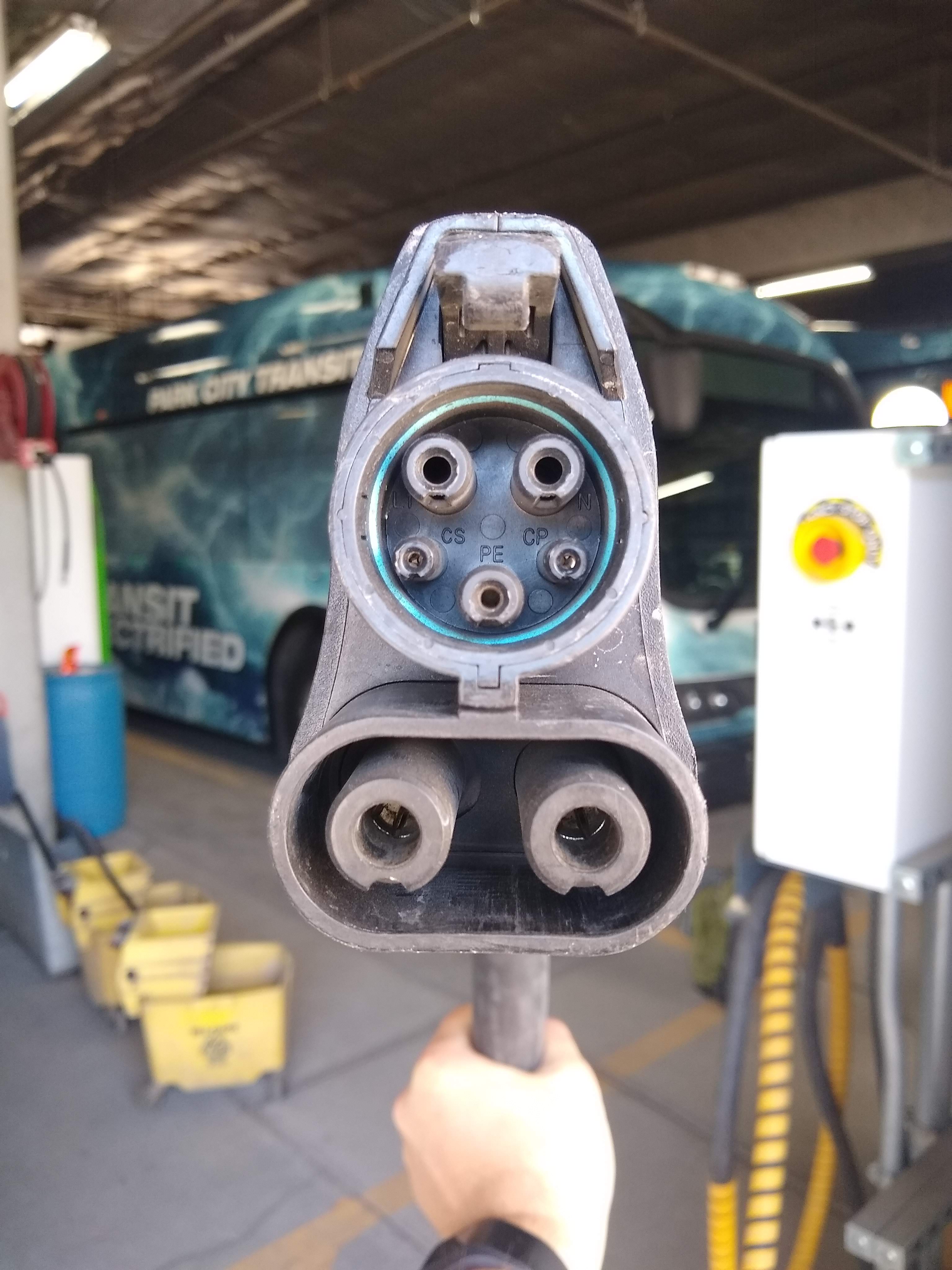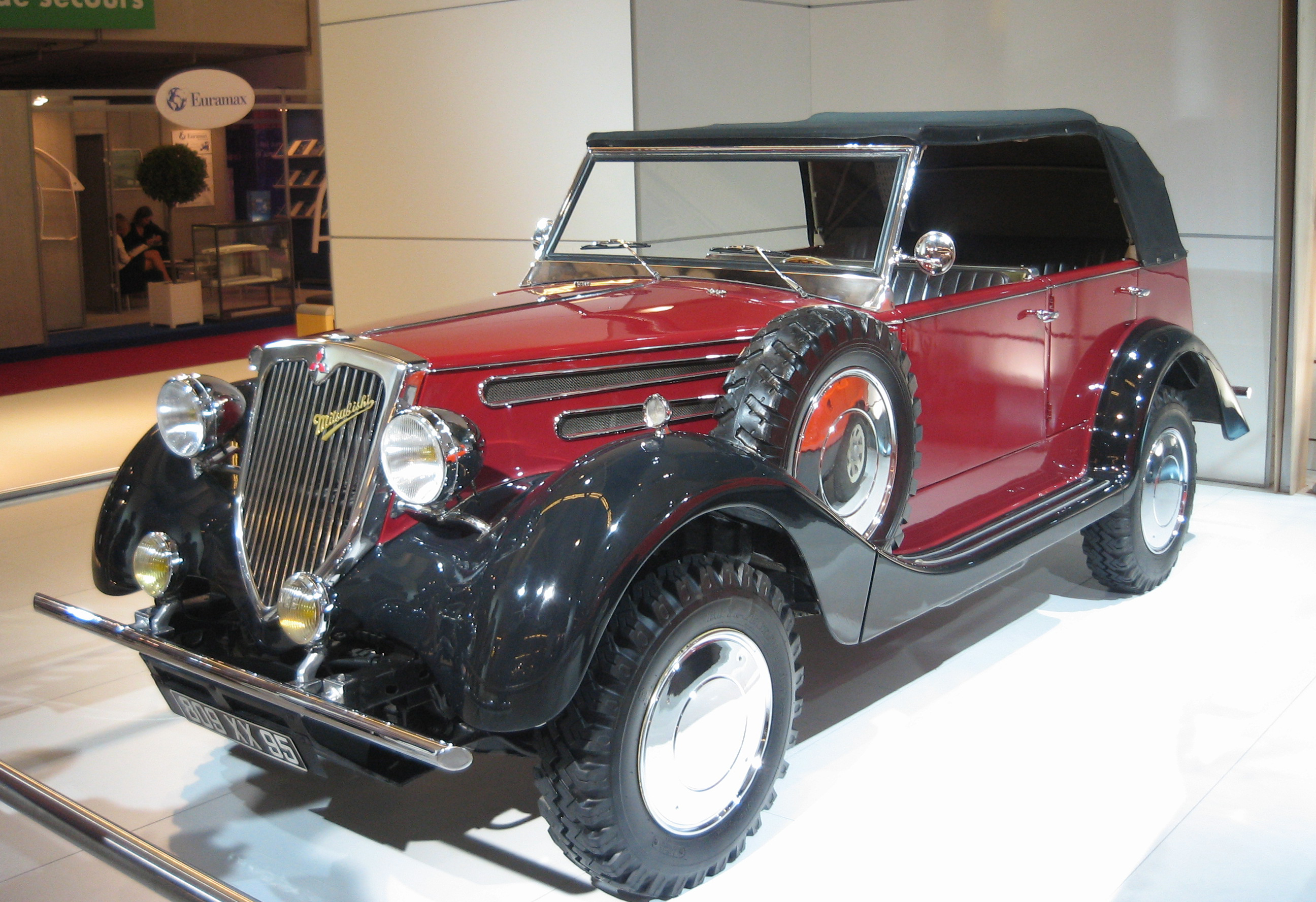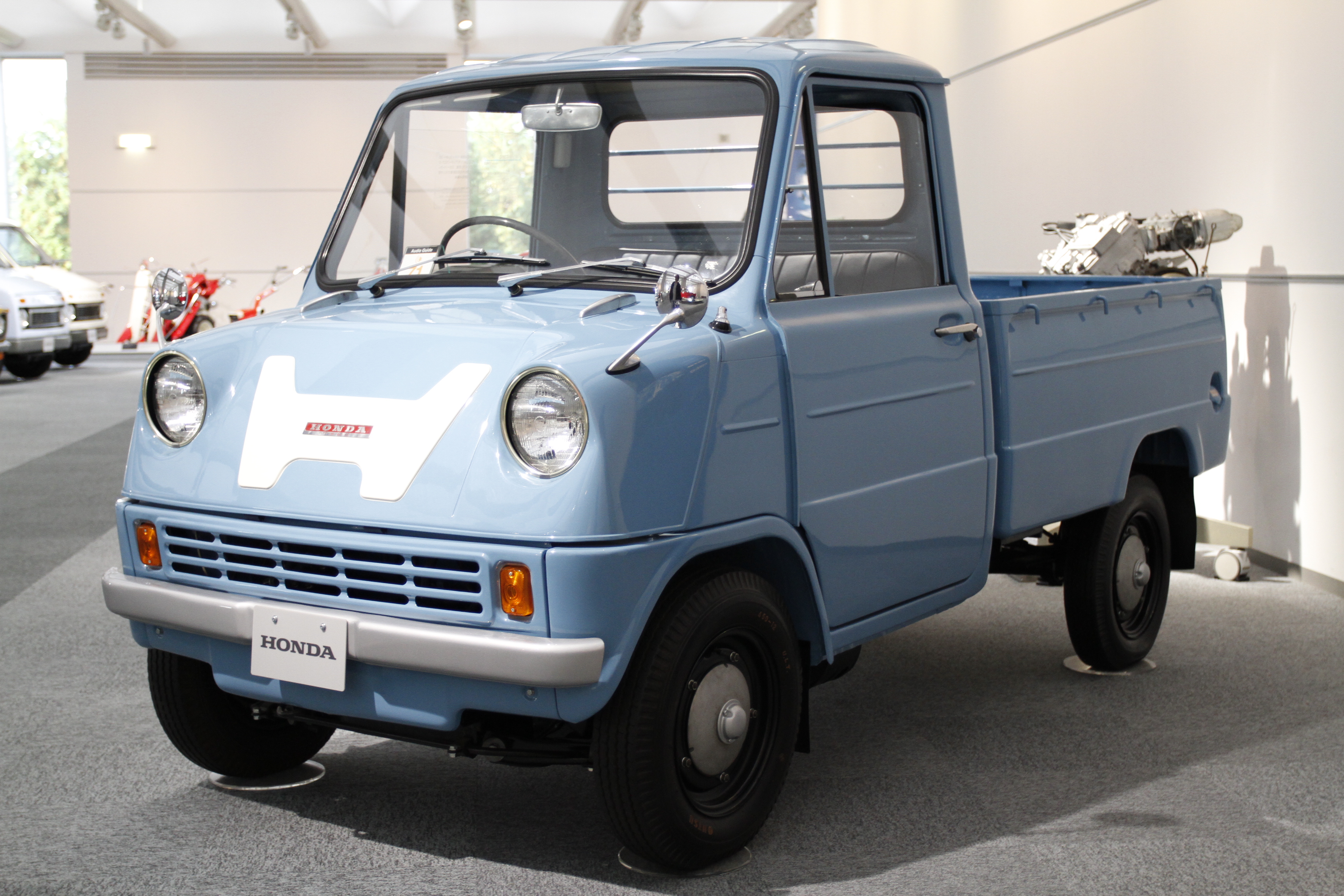|
CHAdeMO
CHAdeMO is a fast-charging system for battery electric vehicles, developed starting in 2010 by the CHAdeMO Association, formed by the Tokyo Electric Power Company and five major Japanese automakers. The name is an abbreviation of "CHArge de MOve" (which the organization translates as "charge for moving") and is derived from the Japanese phrase "" (), translating to English as "How about a cup of tea?", referring to the time it would take to charge a car. It competes with the Combined Charging System (CCS), which since 2014 has been required on electric vehicles sold in the European Union, Tesla's proprietary connector used by its Supercharger network outside of Europe, and China's GB/T charging standard. , CHAdeMO remains popular in Japan, but is being equipped on very few new cars sold in North America or Europe. First-generation CHAdeMO connectors deliver up to 62.5 kW by 500 V, 125 A direct current through a proprietary electrical connector, adding about ... [...More Info...] [...Related Items...] OR: [Wikipedia] [Google] [Baidu] |
IEC 62196
IEC 62196 ''Plugs, socket-outlets, vehicle connectors and vehicle inlets – Conductive charging of electric vehicles'' is a series of international standards that define requirements and tests for plugs, socket-outlets, vehicle connectors and vehicle inlets for conductive charging of electric vehicles and is maintained by the technical subcommittee SC 23H “Plugs, Socket-outlets and Couplers for industrial and similar applications, and for Electric Vehicles” of the International Electrotechnical Commission (IEC). Plugs, socket-outlets, vehicle connectors and vehicle inlets according to this series of standards are used in EV supply equipment according to IEC 61851 series or IEC 62752 and in electric vehicles according to ISO 17409 or ISO 18246. Most plugs, socket-outlets, vehicle connectors and vehicle inlets according to this series of standards provide additional contacts that support specific functions that are relevant for charging of electric vehicles, e.g. power is not ... [...More Info...] [...Related Items...] OR: [Wikipedia] [Google] [Baidu] |
Combined Charging System
The Combined Charging System (CCS) is a standard for charging electric vehicles. It can use or connectors to provide power at up to . These two connectors are extensions of the IEC 62196 Type 1 and Type 2 connectors, with two additional direct current (DC) contacts to allow high-power DC fast charging. The Combined Charging System allows AC charging using the Type 1 and Type 2 connector depending on the geographical region. This charging environment encompasses charging couplers, charging communication, charging stations, the electric vehicle and various functions for the charging process such as load balancing and charge authorization. Electric vehicles or electric vehicle supply equipment (EVSE) are CCS-capable if they support either AC or DC charging according to the standards listed by the CCS. Automobile manufacturers that support CCS include BMW, Daimler, FCA, Ford, Jaguar, General Motors, Groupe PSA, Honda, Hyundai, Kia, Mazda, MG, Polestar, Renault, Rivian, Tesla ... [...More Info...] [...Related Items...] OR: [Wikipedia] [Google] [Baidu] |
Charging Station
A charging station, also known as a charge point or electric vehicle supply equipment (EVSE), is a piece of equipment that supplies electrical power for charging plug-in electric vehicles (including electric cars, electric trucks, electric buses, neighborhood electric vehicles, and plug-in hybrids). There are two main types: AC charging stations and DC charging stations. Batteries can only be charged with direct current (DC) electric power, while most electricity is delivered from the power grid as alternating current (AC). For this reason, most electric vehicles have a built-in AC-to-DC converter, commonly known as the "onboard charger". At an AC charging station, AC power from the grid is supplied to this onboard charger, which produces DC power to charge the battery. DC chargers facilitate higher power charging (which requires much larger AC-to-DC converters) by building the converter into the charging station instead of the vehicle to avoid size and weight restrictions ... [...More Info...] [...Related Items...] OR: [Wikipedia] [Google] [Baidu] |
Electric Vehicle Charging
A charging station, also known as a charge point or electric vehicle supply equipment (EVSE), is a piece of equipment that supplies electrical power for charging plug-in electric vehicles (including electric cars, electric trucks, electric buses, neighborhood electric vehicles, and plug-in hybrids). There are two main types: AC charging stations and DC charging stations. Batteries can only be charged with direct current (DC) electric power, while most electricity is delivered from the power grid as alternating current (AC). For this reason, most electric vehicles have a built-in AC-to-DC converter, commonly known as the "onboard charger". At an AC charging station, AC power from the grid is supplied to this onboard charger, which produces DC power to charge the battery. DC chargers facilitate higher power charging (which requires much larger AC-to-DC converters) by building the converter into the charging station instead of the vehicle to avoid size and weight restrictions. ... [...More Info...] [...Related Items...] OR: [Wikipedia] [Google] [Baidu] |
Mitsubishi I-MiEV
The Mitsubishi i-MiEV (MiEV is an acronym for ''Mitsubishi innovative Electric Vehicle'') is a five-door hatchback electric car produced in the 2010s by Mitsubishi Motors, and is the electric version of the Mitsubishi i. Rebadged variants of the i-MiEV are also sold in Europe by PSA Peugeot Citroën (PSA) as the Peugeot iOn and Citroën C-Zero. The i-MiEV was the world's first modern highway-capable mass production electric car. The i-MiEV was launched for fleet customers in Japan in July 2009, and on April 1, 2010, for the wider public. International sales to Asia, Australia and Europe started in 2010, with further markers in 2011 including Central and South America. Fleet and retail customer deliveries in the U.S. and Canada began in December 2011. The American-only version is larger than the Japanese version and has several additional features. According to the manufacturer, the i-MiEV all-electric range is on the Japanese test cycle. The range for the 2012 model year ... [...More Info...] [...Related Items...] OR: [Wikipedia] [Google] [Baidu] |
Mitsubishi Motors
is a Japanese multinational automobile manufacturer headquartered in Minato, Tokyo, Japan.Corporate Profile , Mitsubishi Motors website, 19 June 2008 In 2011, Mitsubishi Motors was the sixth-largest Japanese automaker and the 19th-largest worldwide by production. Since October 2016, Mitsubishi has been one-third (34%) owned by Nissan, thus a part of the . Besides being part of the Renault–Nissan–Mitsub ... [...More Info...] [...Related Items...] OR: [Wikipedia] [Google] [Baidu] |
European Committee For Electrotechnical Standardization
CENELEC (french: Comité Européen de Normalisation Électrotechnique; en, European Committee for Electrotechnical Standardization) is responsible for European standardization in the area of electrical engineering. Together with ETSI (telecommunications) and CEN (other technical areas), it forms the European system for technical standardization. Standards harmonised by these agencies are regularly adopted in many countries outside Europe which follow European technical standards. Although CENELEC works closely with the European Union, it is not an EU institution. Nevertheless, its standards are "EN" EU (and EEA) standards, thanks to EU Regulation 1025/2012. CENELEC was founded in 1973. Before that two organizations were responsible for electrotechnical standardization: CENELCOM and CENEL. CENELEC is a non-profit organization under Belgian law, based in Brussels. The members are the national electrotechnical standardization bodies of most European countries. Relationships to ... [...More Info...] [...Related Items...] OR: [Wikipedia] [Google] [Baidu] |
IEC 61851
IEC 61851 is an international standard for electric vehicle conductive charging systems, parts of which are currently still under development(written 2017). IEC 61851 is one of the International Electrotechnical Commission's group of standards for electric road vehicles and electric industrial trucks and is the responsibility of IEC Technical Committee 69 (TC69). Standard documents IEC 61851 consists of the following parts, detailed in separate IEC 61851 standard documents: * IEC 61851-1: General requirements * IEC 61851-21-1: Electric vehicle on-board charger EMC requirements for conductive connection to AC/DC supply *IEC 61851-21-2: Electric vehicle requirements for conductive connection to an AC/DC supply - EMC requirements for off board electric vehicle charging systems * IEC 61851-23: DC electric vehicle charging station * IEC 61851-24: Digital communication between a DC EV charging station and an electric vehicle for control of DC charging * IEC 61851-25: DC EV supply eq ... [...More Info...] [...Related Items...] OR: [Wikipedia] [Google] [Baidu] |
International Electrotechnical Commission
The International Electrotechnical Commission (IEC; in French: ''Commission électrotechnique internationale'') is an international standards organization that prepares and publishes international standards for all electrical, electronic and related technologies – collectively known as " electrotechnology". IEC standards cover a vast range of technologies from power generation, transmission and distribution to home appliances and office equipment, semiconductors, fibre optics, batteries, solar energy, nanotechnology and marine energy as well as many others. The IEC also manages four global conformity assessment systems that certify whether equipment, system or components conform to its international standards. All electrotechnologies are covered by IEC Standards, including energy production and distribution, electronics, magnetics and electromagnetics, electroacoustics, multimedia, telecommunication and medical technology, as well as associated general disciplines such ... [...More Info...] [...Related Items...] OR: [Wikipedia] [Google] [Baidu] |
Wired
''Wired'' (stylized as ''WIRED'') is a monthly American magazine, published in print and online editions, that focuses on how emerging technologies affect culture, the economy, and politics. Owned by Condé Nast, it is headquartered in San Francisco, California, and has been in publication since March/April 1993. Several spin-offs have been launched, including ''Wired UK'', ''Wired Italia'', ''Wired Japan'', and ''Wired Germany''. From its beginning, the strongest influence on the magazine's editorial outlook came from founding editor and publisher Louis Rossetto. With founding creative director John Plunkett, Rossetto in 1991 assembled a 12-page prototype, nearly all of whose ideas were realized in the magazine's first several issues. In its earliest colophons, ''Wired'' credited Canadian media theorist Marshall McLuhan as its "patron saint". ''Wired'' went on to chronicle the evolution of digital technology and its impact on society. ''Wired'' quickly became recognized as t ... [...More Info...] [...Related Items...] OR: [Wikipedia] [Google] [Baidu] |
Panasonic
formerly between 1935 and 2008 and the first incarnation of between 2008 and 2022, is a major Japanese multinational conglomerate corporation, headquartered in Kadoma, Osaka. It was founded by Kōnosuke Matsushita in 1918 as a lightbulb socket manufacturer. In addition to consumer electronics, of which it was the world's largest maker in the late 20th century, Panasonic offers a wide range of products and services, including rechargeable batteries, automotive and avionic systems, industrial systems, as well as home renovation and construction. Panasonic has a primary listing on the Tokyo Stock Exchange and is a constituent of the Nikkei 225 and TOPIX 100 indices. It has a secondary listing on the Nagoya Stock Exchange. Corporate name From 1935 to October 1, 2008, the company's corporate name was "Matsushita Electric Industrial Co." (MEI). On January 10, 2008, the company announced that it would change its name to "Panasonic Corporation", in effect on October 1, 2008 ... [...More Info...] [...Related Items...] OR: [Wikipedia] [Google] [Baidu] |
Honda
is a Japanese public multinational conglomerate manufacturer of automobiles, motorcycles, and power equipment, headquartered in Minato, Tokyo, Japan. Honda has been the world's largest motorcycle manufacturer since 1959, reaching a production of 400 million by the end of 2019, as well as the world's largest manufacturer of internal combustion engines measured by volume, producing more than 14 million internal combustion engines each year. Honda became the second-largest Japanese automobile manufacturer in 2001. In 2015, Honda was the eighth largest automobile manufacturer in the world. Honda was the first Japanese automobile manufacturer to release a dedicated luxury brand, Acura, in 1986. Aside from their core automobile and motorcycle businesses, Honda also manufactures garden equipment, marine engines, personal watercraft, power generators, and other products. Since 1986, Honda has been involved with artificial intelligence/robotics research and released their ASIMO rob ... [...More Info...] [...Related Items...] OR: [Wikipedia] [Google] [Baidu] |



_F.png)



.jpg)
